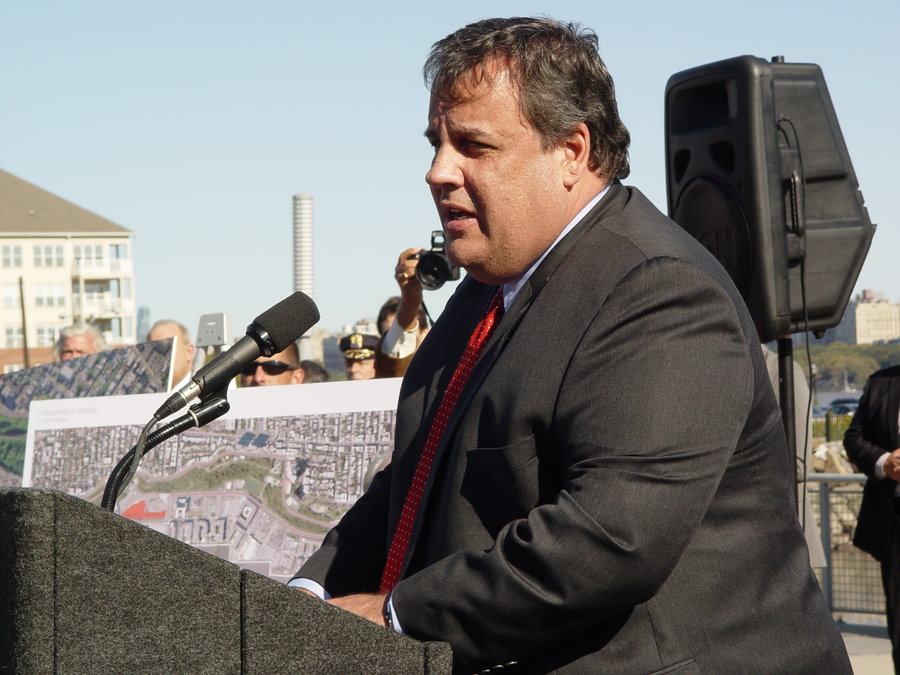Local streets will be roaring two years from now when the towns of Weehawken and West New York host the internationally known Formula One Grand Prix of America race over a three-day period in 2013.
The Fédération Internationale de l’Automobile (FIA) will work in conjunction with state and local workers to turn existing West New York and Weehawken roads into “an absolutely spectacular racetrack,” according to Formula One announcer Steve Matchett.
The annual race is typically run on local streets in a different location each year.
In 2013, cars will start at the Port Imperial Ferry Terminal on the West New York waterfront, move south down the river, head west over the Light Rail tracks and up the hill to the top of the Palisades, turn north on Boulevard East, and then make a sharp right-hand turn and head back downhill. Cars will max out at around 200 miles per hour. They will then take a hairpin turn at the bottom of the hill by the sewage treatment plant and return south to the ferry terminal at river level.
“I’ve got no doubt that this is going to be one of the great marquee events in history.” –Humpy Wheeler
____________
A precise date for the event, and the number of laps the drivers will complete, have yet to be announced.
The race will run for three days. Drivers will practice on Friday, compete in the qualifier on Saturday, and race on Sunday. Big screen televisions and river-height seating will line the course, and the average projected ticket price will run $360 per person for the whole weekend.
Race organizers have a plan for how they will deal with the traffic impact, and said roads will not be closed for very long.
What Formula One will do for NJ
“This is going to be the most state-of-the-art Formula One racing track in all of the world,” said YES Network CEO Leo Hindery at a press conference on Tuesday at the Port Imperial Ferry Terminal, which will serve as the start and finish line for the race. He was joined by Gov. Christopher Christie, West New York Mayor Felix Roque, Weehawken Mayor Richard Turner, former Lowe’s Motor Speedway President Humpy Wheeler, Matchett, and both local and international press.
The race is being held in this area in order to have the Hudson River and Manhattan views in the background, and because of the layout of existing roads.
The event is expected to draw upwards of 100,000 people. According to estimates, Hindery said, it will bring in over $100 million to the area’s economy.
Hindery said Formula One is the number one revenue-producing sport in the world. He emphasized that the race will receive no subsidies, compensation, or tax dollars from the government.
West New York and Weehawken will receive some remuneration, Mayor Turner said, but he could not discuss specifics.
Wheeler (who also happens to play the voice of Sheriff Tex in the children’s movie “Cars”) seconded Hindery. He said he spent four years looking for a place for a new track, and when Hindrey presented him with the Hudson County location, he wondered how he had found it.
“Google,” Hindrey said.
Traffic and safety impact
“We had three goals,” Turner said at the press conference. “It had to be safe, expenses had to be paid for, and there had to be mass transit. And we’ve been able to accomplish all three goals…with as little interference with the neighborhoods as possible.”
Mayor Roque called the Formula One event “the beginning of the rebirth of West New York.” He said the race will “set the tone for future economic growth and development and stability for our towns.”
Hindery said that concrete barriers will line both sides of the track and there will be catch fences set up in spots where cars might be in danger of sliding off the track.
Most of the homes at the top of the Palisades have rear access, and a road at Port Imperial will remain open to compensate for the road that will be closed as part of the circuit so that residents will have access even in the middle of the race, officials said.
Turner said that the road will only be closed at certain times during the racing days, not before.
There are seven homes at the top of the track with some conflict, Hindery said, but the course will move in a way that will allow residents access in case of an emergency.
“They are scientific pieces of equipment almost more than they are race cars,” said Matchett, explaining that the cars are safer than a less technologically advanced vehicle or one driving on an oval course.
As for the concern as to whether or not the towns are equipped to handle such a massive event, Mayor Turner said, “You have to keep in mind that we deal with the Lincoln Tunnel every day. That’s 150,000 vehicles and over 500,000 people coming through every day.”
In response to one reporter’s inquiry about how the already congested towns will handle the extra onslaught of people, Gov. Christie said, “So by congested, you mean teeming with life?” As the audience laughed, he continued, “We said there was going to be no state subsidies, but I am willing to have the state subsidize getting you the hell out of here if you’re really that concerned about it.”
Weehawken Kid Witness News representative Johnny Marrero, age 12, asked Christie whether or not he planned to attend the race.
“Are you kidding me?” Christie laughed. “You won’t be able to keep me away.”
Gennarose Pope may be reached at gpope@hudsonreporter.com/a>
